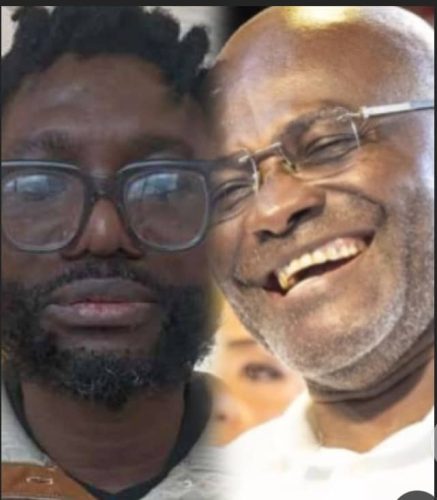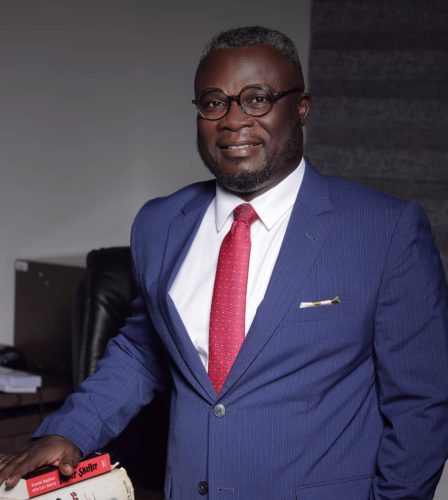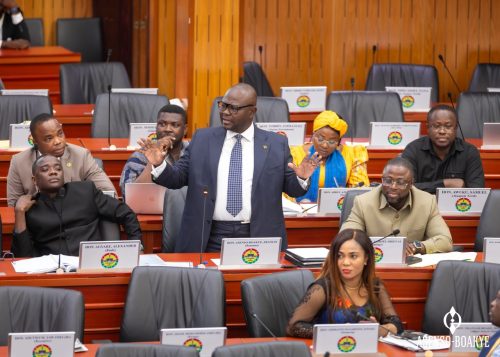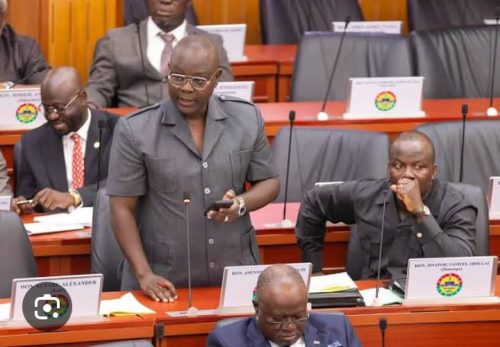

The $18 Million Defamation Dream That Sank Like a Stone and Surfaced as Spare Change


By Kwaku Amoh-Darteh, Esq.

He came not with a briefcase nor mask, but with braided hair; not with facts, but with flair.
The man who once prowled Ghana’s shadows, unearthing rot with hidden cameras and moral pronouncements, had set his sights on a new stage: the American judiciary.
Surely, he thought, the scales of justice in New Jersey would tip for the righteous, especially one so accustomed to basking in the glow of public praise.

So off he went, Anas Aremeyaw Anas – Ghana’s self-styled avenger – clutching an $18 million grievance and a dream to bury Ken Ohene Agyapong under the rubble of defamation. He believed the gavel would echo louder in foreign lands, that the courtroom would revere his reputation as gospel. But in the land of depositions and due process, one cannot tango with drama and expect to waltz away with justice.
The jury, swayed by spectacle, briefly bought the performance. A thunderclap verdict: $18 million. A standing ovation in legal form. Cameras clicked. Tweets flew. Anas smiled.
But before the applause could settle, Judge Beacham cleared his throat and summoned the law: unmoved, unmasked, unimpressed. What followed was a legal humbling so crisp and clinical it might as well have been an exposé. The myth met method. The showman met substance. The $18 million dream sank, not with a bang, but with a carefully reasoned footnote: $500.

Under New Jersey law, defamation occurs when a person communicates false information that harms another’s reputation. To succeed in a defamation claim, a plaintiff must prove that:
1. A false and defamatory statement was made,
2. The statement was communicated to someone other than the plaintiff,
3. There was fault amounting to at least negligence, and
4. The plaintiff suffered harm due to the statement.
However, New Jersey places strict limits on awards. For instance, actual damages – the quantifiable harm, such as financial loss – must be clearly proven. Absent proof of economic harm (like lost job, income, or contract), courts hesitate to award significant compensatory damages. In fact, by New Jersey standards, nominal damages for defamation can be as low as $500 when no substantial harm is proven.
To understand what went wrong for Anas, we must grasp the three-tiered structure of damages:
Actual Damages: These are the direct, economic losses. Think of lost wages or business opportunities. In this case, Anas claimed $5 million in actual damages but failed to produce concrete evidence.
Compensatory Damages: These address non-economic harm – emotional distress, reputational harm, etc. Anas needed to prove a direct link between the alleged defamation and his suffering. He failed.
Punitive Damages: These are meant to punish the defendant for egregious conduct. Under U.S. law, punitive damages usually require compensatory damages to be awarded first. Without the latter, the former cannot stand.
So, although the jury granted all three – $5 million each for actual and compensatory, and $8 million in punitive damages—the award lacked legal legs.
In the U.S. legal system, the jury determines the facts and can award damages based on the evidence presented. However, the judge is the gatekeeper of the law and can override the jury if its decision “shocks the judicial conscience.”
The jury in Anas v. Agyapong, likely overwhelmed by the dramatic flair of Anas’s presentation, awarded a staggering $18 million. But Judge Beacham intervened before that decision could be entered as judgment. He noted the absence of concrete evidence of harm.
Remittitur, a legal tool allowing judges to reduce excessive jury awards, was applied. The court found the verdict exorbitant and unsupported, thereby remitting it to $500—the maximum nominal award justified by law.
In an equally audacious move, Anas filed a Cross-Motion for Additur – a plea to increase the jury’s already discredited punitive award. But the court swiftly dismissed it, noting that the plaintiff’s request lacked grounding in New Jersey case law and fundamentally misunderstood the law on punitive damages.
The court held that since Anas had failed to establish actual damages or a legal basis for presumed reputational harm, punitive damages were never available, and the matter should not have proceeded to a punitive phase at all. The jury’s clarification—that it awarded $5 million in actual damages, $5 million in presumed damages, and $8 million in punitive damages—was declared inconsequential. None of those layers held under legal scrutiny.
Judge Beacham emphasized that a new trial on damages was not warranted, because the law governing permissible defamation damages in New Jersey provides a clear ceiling of $500 in the absence of demonstrable harm.
Thus, the court granted Agyapong’s Motion to Mold the Jury Verdict and denied Anas’s Cross-Motion for Additur in its entirety.
As soon as the jury’s decision hit the airwaves, Anas and his supporters declared victory, celebrating what they deemed a decisive blow to Ken Agyapong. But the celebration was premature.
The legal team for Agyapong swiftly filed for remittitur, urging the court to apply the law rather than sentiment. And when the dust settled, the court agreed.
There is an essential truth in the American justice system: where there is no entered verdict, there is no judgment. The moment a jury speaks is not the end, but often the midpoint. The gavel of the judge is final—not the applause of the crowd.
And so, from behind the mask, the courtroom demanded a face—not a fable. In a land where evidence reigns and reputation bows to proof, the jury’s initial applause was not enough. There was no entered verdict. No enforceable judgment. The law had not yet spoken, and yet, Anas had danced.
He rushed to jubilate, parading his “victory” on airwaves and platforms, forgetting—quite ironically—that law is not theatre, and courts are not film festivals. A man who made his name on sting operations forgot the first rule of the hunt: bring evidence, not ego.
In the end, it was Ken Ohene Agyapong – so often ridiculed, so often underestimated—who brought down the head of Medusa. With patience, process, and relentless truth, he stood firm as drama collapsed under scrutiny. A hero in the pursuit of justice, not by theatrics, but by trust in the system.
A final bow, then, to the courtroom’s wisdom. No need for hidden lenses or dramatic monologues. Just one lesson carved into legal stone:
You may wear a mask in the public square, but in the court of law, truth stands bare.
Justice, at last, unmasked.

Enock Akonnor is an experienced Ghanaian journalist, based in Kumasi and currently serves as the CEO and Managing Editor of www.leakyghana.com.
With a wealth of expertise built over many years in the media industry, he has earned a solid reputation as one of Ghana’s most sought-after journalists.
Contact:
📞 +233 541 921 562
✉️ enockakonnor2013@gmail.com










